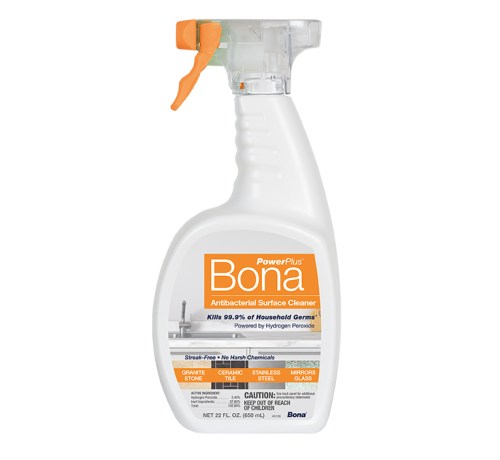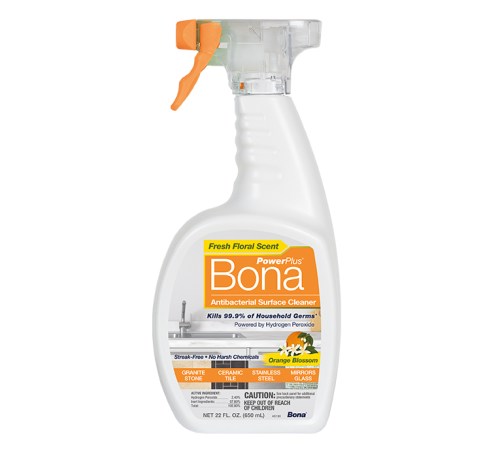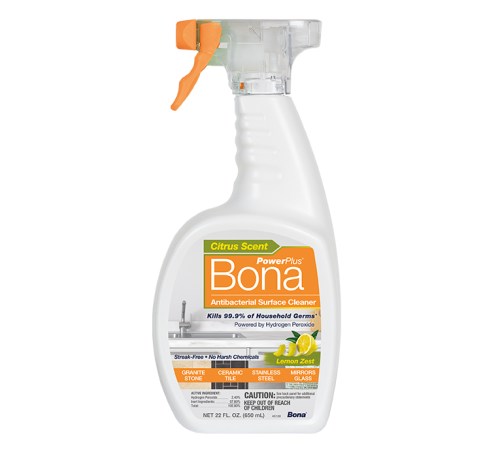Here’s Exactly How Dirty Your Food-Prep Space Is—And What to Do About It
Sure, they look cleaner than the ground, but according to Kelly A. Reynolds, professor of environmental health sciences at the University of Arizona’s Zuckerman College of Public Health, they're likely not as sparkling as you think.
"Kitchens tend to be one of the germiest rooms in the house and often are more contaminated than bathrooms," Reynolds says. Germs like E. coli or salmonella, or a whole slew of viruses, are commonly found all over the kitchen, and they can survive on your surfaces for days, weeks, or even longer."
"Kitchens tend to be one of the germiest rooms in the house and often are more contaminated than bathrooms."
All of this probably makes you want to carry around a bottle of disinfectant—and you'd be on the right track. Reynolds recommends one that is both actually labeled a disinfectant and approved by the Environmental Protection Agency, which "confirms that the product has been tested and is effective at killing a wide range of bacteria and viruses," she explains.
One product that meets those recs? Bona PowerPlus Antibacterial Surface Cleaner*, which comes in three fresh-smelling (read: not-chemically smelling) scents. It's hydrogen peroxide-based, which means it "simply breaks down into water and oxygen," says John Schierlmann, director of research and development for Bona. "It releases thousands of micro-bubbles to deep clean surfaces, and it helps eliminate odors."
To get in the habit of cleaning regularly, Reynolds made disinfecting part of her morning routine: She wipes down high-touch surfaces while her coffee brews each morning. Here are the top three spots she says to target.
Keep scrolling for the three germiest kitchen surfaces, and how to clean them.
1. The sink
If you're cleaning everything but the kitchen sink, you might want to change your tune. It's easy to forget about, but your kitchen sink is where you clean your produce and wash your dishes. While those come out all shiny and new, the germs and grime get left behind. "Surfaces in the sink should be disinfected each time after preparing potentially contaminated food sources and at least weekly as a routine," Reynolds says.
Luckily, cleaning it isn't difficult. Reach for a bottle of Bona PowerPlus Antibacterial Surface Cleaner (it's important to choose a disinfectant that's formulated for what you're cleaning—both so it works efficiently and doesn't ruin the item in the process, Schierlmann says), spray your sink until it's thoroughly wet, wait 10 minutes, then wipe clean. Bonus: It won't leave any streaks, but it will make your kitchen smell like oranges.
SHOP CLEANING SUPPLIES
2. The tools
Running your cutting board under a stream of hot water isn't, well, cutting it (especially if raw meats are involved). Reynolds recommends tossing cutting boards and cooking utensils in the dishwasher after every use.
And as for the scrub brush, sponge, or rag you use to scrub off the bits of food? Those are germs' favorite place to call home. Reynolds sprays her scrub brush with disinfectant every night, and recommends dunking your sponge in diluted bleach water and tossing your rag in the laundry after every use (no, seriously).
3. The high-touch areas
"Kitchens are busy environments and surfaces can rapidly become re-contaminated," says Reynolds. Even the most careful cooks have tossed a cutting board covered in chicken juice in the sink, then immediately used the same hand to open the fridge. It happens, which is why it's important to know how to clean these kitchen surfaces.
Reynolds recommends using your disinfectant on frequently touched surfaces like the refrigerator, oven, and cabinet handles after each food-prep session. On top of that, make it part of your weekly cleaning routine for good measure. And just like that, your kitchen will be back to being as sanitary as you always assumed it was.
Top photo: Stocksy/Kristine Weilert
*Kills 99.9% of Influenza A H1N1 Virus, Rhinovirus, Escherichia coli, Listeria monocytogenes, Pseudomonas aeruginosa, Salmonella enterica, Staphylococcus aureus, Methicillin-resistant Staphylococcus aureus [MRSA], Trichophyton mentagrophytes, on hard non-porous surfaces in 10 minutes
Loading More Posts...


